#film advice
Explore tagged Tumblr posts
Text
If it doesn’t impact the rest of the story, you didn’t raise the stakes
I recently went back to a chapter at the midpoint of my novel and changed a huge detail of it because I thought it didn’t raise the stakes enough as it was. Because of this change, I had to go through every single scene and chapter beyond that point and edit it to fit in and make sense. It was annoying, but that’s how I knew I achieved what I wanted to.
Raised stakes change everything about a story.
If your characters can continue on as they were, then you didn’t really raise the stakes at all. This heightened pressure or danger has to be heightened enough that their lives as they know them are different now.
Consider this: at the midpoint, you introduce a mutated form of a monster your characters have been facing that’s more deadly and intelligent than its predecessor. It’s a super scary scene, but after that, your characters go back to their safe house to talk over how best to kill it.
Suddenly, this new monster doesn’t feel as much of a threat. It’s just another element of the same threat they’ve already been facing.
To properly use this element as a way to raise the stakes, it should take away something the characters rely on—safety, allies, powers, etc. Something they can’t get back, and don’t get back for the rest of the story. They now have to adapt to new circumstances, and things will never be as easy for them again.
So maybe instead, they flee to their safe house only to discover that it’s no longer safe—the monster is smart enough to get through their hidden entrance and corner them. Now they’re stuck out in the open, taking turns keeping watch and slowly deteriorating to sleeplessness and stress.
That’s a delicious steak.
#writing#creative writing#writing community#writers#writing inspiration#screenwriting#filmmaking#books#film#writing advice#raising stakes#writing stakes#writing consequences#If it doesn’t impact the rest of the story
2K notes
·
View notes
Text
one thing about the 118 is that even when bobby is gone they are going to pull up to his house one by one and trauma dump their life updates on him
#i think i’ve seen this film before#(aka bobby’s s2 suspension arc)#that’s their captain dad! ofc they still need his advice!#it was just cute seeing this parallel lol#bobby nash#captain bobby nash#118 firefam#911 firefam#911 spoilers#9-1-1#911#911 show#911 abc#911 season 8#em saying things
1K notes
·
View notes
Text
Writing Notes: Coming-of-Age Story

A story featuring an adolescent making the mental leap from child to adult.
In real life, this happens over the course of several years.
Literature, films and some television series are media that have the space to show the story at a slow pace. Things have to be compressed to several months at the most, so expect some really accelerated character development.
Writing Tips: Coming-of-Age Story
When writing a coming of age story, consider these steps to increase the emotional power and appeal to readers:
Develop a clear voice. Many coming-of-age stories are in first person, giving the reader an immediate impression of the protagonist. Work on developing a voice for your protagonist—think about how the character speaks, how they address other characters vs. how they address the reader, and what kind of opinions they have.
Seek originality. Try to find a novel way of approaching the experience of character growth. You can create an unusual character or a strange event to highlight the change and its effects.
Work motifs into the story. As with any narrative, the use of motifs, such as images that resonate with the theme, can be a great way to strengthen your story. Carefully evoke some of the possible throughlines, like markers of change, loss of innocence, childhood versus adulthood, moral growth, and knowledge.
Find the conflict. Reaching adulthood has plenty of built-in conflict. To make a solid, affecting story, focus on specific instances of conflict. This can be between a child and their parents, between the character and an institution (such as school), or between different youths with varying experiences and personalities. Having these scenes in mind can be especially helpful when planning the plot points of your story.
Draw from personal experience. Many coming-of-age stories are wholly or partially autobiographical. While your own experiences can be a valuable resource, such self-exposure takes courage and often involves personal details of others who might not want to be written about. Carefully choose personal information to work into your story.
Identify the pivotal events. Often, coming-of-age stories center around a particular event or a few key events that are formative to character development. This will be one of the most significant emotional beats in the narrative
Find your writing approach. No two writers have the same approach to writing a story. Some take extensive notes, while others meticulously plan every scene before writing the details, descriptions, and dialogue. Other writers make much of their narrative up as they proceed; finding out which approach is right for you takes practice and a certain amount of trial and error.
Types of Coming-of-Age Stories
Bildungsroman: Bildungsroman, which translates to “novel of education” or “novel of formation,” chronicles a character’s journey from young innocence to worldly adulthood. This is a specific type of coming-of-age story in which the character gains knowledge and experience, even as innocence is lost.
Sexual awakening: Many coming-of-age books and movies center around the momentous changes brought about by discovering sexuality. This can be a highly-charged emotional experience to write about, and the dramatic possibilities are rich and varied, making it an excellent material for revealing personal growth.
Discovery of identity: This type of coming-of-age tale involves a character coming to discover, and hopefully embrace, their identity. This type of story might focus on gender identity, sexual identity, political identity, racial identity, or a combination of identities to expand the depth and emotional heft of the story.
Betrayal: Growing up can be a painful process. When shaping a coming-of-age narrative, it can be helpful to emphasize how increased knowledge, especially about other people and their motivations, can cause suffering for the protagonist. A character might emerge from this experience with more pain but more knowledge of themselves and the world.
The words bildungsroman (Ger. "educational novel") or bildungsgeschichte (Ger. "educational story") are sometimes used to describe these kinds of stories.
A note on the translation: the terms originated in the Age of Enlightenment, when "Bildung" meant not only "education" but also "self-improvement" (cf. English "building") — or as Werner Heisenberg put it, Bildung is "that which is still there after you've forgotten everything you had ever learned".
In other words, it's not a "novel to educate the readers" but a "novel about the hero becoming someone".
Examples of Coming-of-Age Novels
The Catcher in the Rye by J. D. Salinger (1951): The main character is Holden, a jaded teenager expelled from boarding school who is easily annoyed by everyone and everything. The book follows his journey from living a life of angst to finding true happiness.
To Kill a Mockingbird by Harper Lee (1960): This novel tells the story of a young girl who experiences hate from her community when her father defends a Black man accused of committing a crime in the south. At the beginning of the novel, she’s an innocent, immature girl. But as the story progresses and she witnesses injustice and racial prejudice, she learns that life isn’t always fair.
In Film
Coming-of-age movies belong to a genre that focuses on young adults.
A coming-of-age movie - a film that follows a protagonist as they transition from childhood to adulthood.
This genre of storytelling is popular for literature and movies in Hollywood and often features stories about critical junctures between childhood and adulthood, such as first romantic relationships, graduating from middle school or high school, and moving away from home.
Characteristics of Coming-of-Age Movies
Coming-of-age films typically feature these standard storytelling devices:
Character growth: These films usually follow a character realizing their future, which propels their development from an innocent child to a perceptive young adult. The films focus on the characters’ mental, emotional, and personal growth.
Dialogue: Coming-of-age films focus on the interior lives and emotions of the characters, rather than an outside action or adventure that’s driving the narrative. These films feature more dialogue and moments of stillness than dramatic actions or events.
Social commentary: Coming-of-age films address issues that teens face today, like coming out in Moonlight (2016), teen pregnancy in Juno (2007), or race and violence in Boyz n the Hood (1991).
Examples in Film
The Breakfast Club (1985): Arguably one of the most well-known teen films and coming-of-age films, John Hughes' movie is set one weekend where a group of teens from different backgrounds are trapped together in detention.
Boyhood (2014): This coming-of-age movie from filmmaker Richard Linklater was filmed over twelve years. It follows one boy from age six to eighteen.
Moonlight (2016): This film follows a man through three stages of his life—childhood, teenage years, and adulthood—as he slowly comes to terms with his sexuality.
Call Me By Your Name (2017): This Italian-set movie is a love story, following the relationship between a young man as he falls in love for the first time.
Lady Bird (2017): Lady Bird is Greta Gerwig's solo directorial debut. It follows a teenage girl applying for college far from home in New York and navigating a fraught relationship with her overbearing mother.
We wouldn’t call all films or books “coming-of-age” stories simply because the main character matures.
The genre has certain hallmarks denoting not just change, but the loss of innocence in the transition.
To put it another way, childhood must be left behind and the lessons of adulthood will be complex, ambiguous, and arduous.
That’s not to say that every coming-of-age story is a downer, but there is a realization that the past is lost and gone forever, so there is a bittersweet element at play.
Sources: 1 2 3 4 ⚜ More: Notes & References ⚜ Writing Resources PDFs
#coming of age#writeblr#literature#writers on tumblr#writing tips#writing reference#dark academia#spilled ink#creative writing#writing prompt#fiction#genre#writing advice#film#light academia#writing inspiration#writing ideas#mary cassatt#writing resources
131 notes
·
View notes
Text
some of my favorite shows and films⋆.ೃ࿔*:・🧁

FAVORITE SHOWS ;
♡ desperate housewives
oh my GOSH desperate housewives is my holy grail. like its the best show ever made and u can NOT change my mind. 10/10 would absolutely recommend…💬🎀


♡ barbie life in the dream house
♡ my demon
i honestly haven't watched that many shows considering how short this list is but i have a couple on my watch list so hopefully i'll get to that soon…💬🎀
FAVORITE ANIMES ;
♡ one piece
okay ik one piece is so absurdly long but its SO GOOD. oda knows wtf hes doing like hes SO talented and with a series this long its difficult to make everything tie together beautifully and hes doing that, so hes a baddie…💬🎀
♡ neighborhood story
♡ nana
♡ sailor moon
i also cried when i finished the anime…💬🎀
♡ paradise kiss
I LOVE PARADISE KISS SO SO MUCH IT WAS WAY TOO SHORT. i literally cried when i finished it cuz i was so hooked…💬🎀


FAVORITE FILMS ;
♡ the love witch
beautiful cinematography, i love loved the character of elaine and everything was just super feminine and whimsical and i enjoyed so much…💬🎀
♡ mean girls (2004)
♡ clueless
♡ legally blonde
♡ all the princess diaries movies
#honeytonedhottie⭐️#it girl#becoming that girl#self concept#that girl#self care#self love#it girl energy#advice#girly#girl blogging#girl blog#girl blogger#my thoughts💬🎀#hyper femininity#hyper feminine#dream girl tips#dream girl#dream life#dreamy#girly movies#girly shows#mean girls#mean girls 2004#clueless#girly films
226 notes
·
View notes
Note
Do you have any good resources/references/advice for drawing (late republican) Roman clothing? I want to draw a couple of historical figures but thinking about drawing a toga makes me feel like 😖😖😖...
-Costumes of the Greeks and Romans, Thomas Hope
-Greek and Roman Fashions, Tom Tierney
-The World of Roman Costume, ed. Judith Lynn Sebesta and Larissa Bonfante.
-Decorative Symbols and motifs for Artists and Craftsmen/Decorative Patterns of the Ancient World, Dover Publications
-photos & videos from reenactors and reenactment events
-build a screenshot reference library from movies and shows that have costume designs you like, that kind of thing. grab a blanket and wrap yourself up in it toga style and take a photo if you need a specific angle. etc. museums usually have a lot of their galleries online, and places like the met often shoot statues from multiple sides.
#my screenshot reference library has a lot from gladiator/hbo rome/the cleopatra movie/various JC film adaptions#sometimes toy stores and craft supply places have those tiny figures and every now and then they got little romans#highly recommend that too#ask tag#ngl if you can grab the discovery tour edition of assassins creed origins. like. go to one of the greek/roman cities and use#photo mode on various npcs#art advice tag
202 notes
·
View notes
Text

I don’t think I’ve ever been so happy a scene was cut from a show
#friends#friends tv#friends tv show#monica geller#chandler bing#chandler x monica#mondler#matthew perry#courtney cox#matthew really said ‘you aren’t going to Ross-Rachel-ize this pairing on my watch’ and I love him for it#because this would have changed EVERYTHING#the only other time chandlers character pushed it for me is when he almost bailed on their wedding#but then they wrote him snapping out of it and giving those beautiful vows#but if they had him CHEAT monica barely a year into their marriage……throw the whole character away#and matthew knew this and was like FaUck NO#i love when actors defend their characters and the writers actually take their advice#and they had already filmed the cheating scene apparently!!!!!!
425 notes
·
View notes
Text

821 notes
·
View notes
Text
i called my dad earlier (he LOVED good omens s2 he was absolutely raving about it) and he immediately told me to go watch the have i got news for you episode with david tennant hosting bc the entire panel roasts him via michael sheen compliments for a solid minute (link) and this joke hits so different after s2

#good omens spoilers#david tennant#good omens#hed finished filming gomens s2 by this point so he . he knew#im crying thanks @ my dad for this advice#this whole segment had me crying michael sending a video of himself just. clearly meant to be out in wales
577 notes
·
View notes
Text

#What to do if You’re Working in a Mine and You Accidentally Uncover an Ancient Evil#tips#tricks#life hacks#helpful hints#advice#this is actually the plot of the 1981 film THE BOOGENS
593 notes
·
View notes
Photo

#Rema#HEIS#photography#black and white#aesthetic#film noir#afrobeats#drip#all white fit#fashion tips#fashion advice#autumn fits#fall fits#fitspo#melanin#black excellence#africa#music#culture
61 notes
·
View notes
Text
5 Tips for Creating Intimidating Antagonists
Antagonists, whether people, the world, an object, or something else are integral to giving your story stakes and enough conflict to challenge your character enough to change them. Today I’m just going to focus on people antagonists because they are the easiest to do this with!
1. Your antagonist is still a character
While sure, antagonists exist in the story to combat your MC and make their lives and quest difficult, they are still characters in the story—they are still people in the world.
Antagonists lacking in this humanity may land flat or uninteresting, and it’s more likely they’ll fall into trope territory.
You should treat your antagonists like any other character. They should have goals, objectives, flaws, backstories, etc. (check out my character creation stuff here). They may even go through their own character arc, even if that doesn’t necessarily lead them to the ‘good’ side.
Really effective antagonists are human enough for us to see ourselves in them—in another universe, we could even be them.
2. They’re… antagonistic
There’s two types of antagonist. Type A and Type B. Type A antagonist’s have a goal that is opposite the MC’s. Type B’s goal is the same as the MC’s, but their objectives contradict each other.
For example, in Type A, your MC wants to win the contest, your antagonist wants them to lose.
In Type B, your MC wants to win the contest, and your antagonist wants to win the same contest. They can’t both win, so the way they get to their goal goes against each other.
A is where you get your Draco Malfoy’s, other school bullies, or President Snow’s (they don’t necessarily want what the MC does, they just don’t want them to have it.)
B is where you get the other Hunger Games contestants, or any adventure movie where the villain wants the secret treasure that the MCs are also hunting down. They want the same thing.
3. They have well-formed motivations
While we as the writers know that your antagonist was conceptualized to get in the way of the MC, they don’t know that. To them, they exist separate from the MC, and have their own reasons for doing what they do.
In Type A antagonists, whatever the MC wants would be bad for them in some way—so they can’t let them have it. For example, your MC wants to destroy Amazon, Jeff Bezos wants them not to do that. Why not? He wants to continue making money. To him, the MC getting what they want would take away something he has.
Other motivations could be: MC’s success would take away an opportunity they want, lose them power or fame or money or love, it could reveal something harmful about them—harming their reputation. It could even, in some cases, cause them physical harm.
This doesn’t necessarily have to be true, but the antagonist has to believe it’s true. Such as, if MC wins the competition, my wife will leave me for them. Maybe she absolutely wouldn’t, but your antagonist isn’t going to take that chance anyway.
In Type B antagonists, they want the same thing as the MC. In this case, their motivations could be literally anything. They want to win the competition to have enough money to save their family farm, or to prove to their family that they can succeed at something, or to bring them fame so that they won’t die a ‘nobody’.
They have a motivation separate from the MC, but that pesky protagonist keeps getting in their way.
4. They have power over the MC
Antagonists that aren’t able to combat the MC very well aren’t very interesting. Their job is to set the MC back, so they should be able to impact their journey and lives. They need some sort of advantage, privilege, or power over the MC.
President Snow has armies and the force of his system to squash Katniss. She’s able to survive through political tension and her own army of rebels, but he looms an incredibly formidable foe.
Your antagonist may be more wealthy, powerful, influential, intelligent, or skilled. They may have more people on their side. They are superior in some way to the protagonist.
5. And sometimes they win
Leading from the last point, your antagonists need wins. They need to get their way sometimes, which means your protagonist has to lose. You can do a bit of a trade off that allows your protagonist to lose enough to make a formidable foe out of their antagonist, but still allows them some progress using Fortunately, Unfortunately.
It goes like… Fortunately, MC gets accepted into the competition. Unfortunately, the antagonist convinces the rest of the competitors to hate them. Fortunately, they make one friend. Unfortunately, their first entry into the competition gets sabotaged. Fortunately, they make it through the first round anyway, etc. etc.
An antagonist that doesn’t do any antagonizing isn’t very interesting, and is completely pointless in their purpose to heighten stakes and create conflict for your protagonist to overcome. We’ll probably be talking about antagonists more soon!
Anything I missed?
#writing#creative writing#writers#screenwriting#writing inspiration#writing community#filmmaking#books#film#writing advice#antagonists#villains#writing antagonists#5 tips for creating intimidating antagonists
2K notes
·
View notes
Note
Hi! First off, I want to say that I love how you analyze media and having really been enjoying reading all your posts :) I just wanted to ask—do you have tips for people who what to learn to think more critically about media and just storytelling in general? Like, are there questions that you usually ask yourself when looking at a character's journey or the messaging behind the movie? Just trying to learn how to better analyze the media I consume, as well as improve on pinpointing the specific reasons why I like the movies that I like, instead of just saying "Well, I liked it. It was great" and leaving it at that 🙈.

New favorite question!
I love that you want to know why you like something. I love it. I think so many people are ready to give a defense for why they dislike something, and the blood-sport of “picking it apart,” but then they don’t really know how to reverse the process and be like, “here’s why I liked this other thing,” or they can’t speak accurately and clearly about why they like something, which is a huge shame, and sort of raises other questions about critical thinking but you’re not doing that! So you’re already awesome!
I am not an expert. I could be 100% wrong about everything I do, and all the questions I ask. I only went to a normal amount of education for this. It does not mean I have all the insight and the good advice.
BUT you asked, and I love talking about it, so it’s going to be long, and here’s what I do:
Step 1. I Just Watch the Movie.
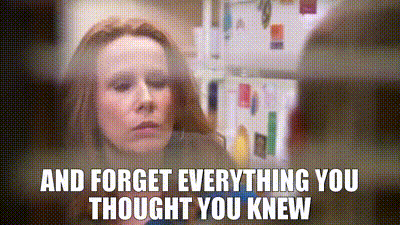
That’s it. Just take it in. No expectations. Do not try to figure out what’s wrong with it or what’s right with it. Don’t even assume there’s such a thing as “right” or “wrong” the first time you watch it. It is THE hardest thing to do, once you gain some “knowledge” of storytelling. But truthfully, if you go into a story with your eyes and ears open for flaws, or a checklist of “Right Things to Do,” then you’ve already lost any objectivity. You’ll be so busy going “good thing, bad thing,” that the movie will never be able to establish an “emotional train of thought,” with you. Because you’re already taking it piece by piece, like eating a burger one ingredient at a time, instead of taking a full bite. It’s meant to be one-successive-thought/feeling-on-top-of-another, but you’re picking it apart before it’s over.
Plus, you’re not letting the story do what it was meant to do—get under your mental guard. And that’s the whole point of stories. So in a way, if your Critical Analysis Cap is already conciously on, even the best movie in the world won’t come off as the best movie in the world. C.S. Lewis talks about this in one of his essays. I’ll try to simplify it:
You can’t decide if you like something or dislike something until after you’ve eaten it. You certainly can’t really experience “what ingredients it’s made of” before you’ve eaten it. You can make some observations about a food without ever putting it in your mouth and experiencing it—I can look at a brownie and go, “there’s chocolate in there.” I can cut into it and go, “oh, but it’s tough.” But I haven’t even begun to scratch the surface of experiencing that brownie until I just shut up and put it in my mouth.
That is the hardest part and the part I suck at the very most. My suckiness at this part is why my friends hate watching movies with me. But on some level, you have to suspend your worldview, your opinions, and try to just listen.
It’s also why (this is just an aside) I struggle when people recommend a movie to me. Because they usually go, “what do you think of this movie?” And then I say, “I haven’t seen it.” And then they go, “oh you should watch it!” And I know for a fact that they’re going to ask me how it was, and my answer needs to be prepared—so then I’m already handicapped before I even try it. But it can’t be helped. And that’s just food for thought.
Step 2: “What Are They Trying to Tell Me?”

The only thing you need to think, when you go into analyzing a movie, before anything else, is, “They are trying to tell me something.”
That’s it. It’s just active listening, but in a movie. I think that’s like 90% of it. And so many people don’t know how to do that—in life, in conversation—let alone when they watch something. It’s the movie-watching equivalent of “stop thinking about what you’re going to say or how you’re going to respond to me, and just listen to what I’m saying.”
Remember, the whole storytelling team behind a movie or the writer of a novel sat down in front of a blank piece of paper. There was nothing there. They made several hundred thousand tiny and huge decisions to put something in front of you. Almost nothing you see in the story is there on accident. Because none of it would be there if they didn’t decide to transplant what they were thinking and feeling into you.
That’s all a movie is. That’s all a story is. It’s communication. It’s an essay. It’s a sermon. It’s a song. You can figure out what it means—but only if you start out by accepting, on good faith, that it means something.
I’m not saying every story of movie will have a well-thought-out meaning. I’m saying, you’re going into it as if it does. In good faith. And then the storytellers will either reward that good faith because they had something to say—or they’ll let you down. But you go in assuming they won’t let you down, that this is an agreed-upon conversation you two are having.
That takes a level of humility I don’t always have. Because if I know Christopher Nolan is directing a movie, at this point, it’s hard for me not to go into that movie with the story-version of this mindset: “well, I know he’ll have a lot of ‘big words’ to use, but nothing to actually say.” It’s hard to do.
But you have to do it, or else the risk of you projecting what you believe the movie is about onto it, or missing the meaning entirely, is astronomically high. You’ll watch a Disney Princess movie that’s total trash (I can’t stop coming for Wish) and you’ll see everything you’ve always wanted to see in it—because you’re projecting what you hope they’re saying onto the movie (when actually they were saying something very silly.) Or you’ll be like me watching The Dark Knight for the first time and trying desperately to wrestle my brain into “believe he’s trying to say something to you and not just snag your emotions on meaningless twists”-mode the whole time.
And the best way to figure out what they were trying to tell you is to start with where they succeeded in making you feel something. Wherever they succeeded, that’s where you’ll start looking for clues.
Step 3. What Did You Feel?

Sometimes you have to skip this step because you couldn’t get Step 1 right. You couldn’t just watch the movie, you were “out of the movie,” the whole time you were watching it. Sometimes that’s not your fault—sometimes a movie is so bad or so disingenuous that you can’t do Step 1, and you have to settle not for “What Did You Feel?” (Because you felt nothing) but “What Did They Want Me To Feel?”
…But if you were able to just watch it and it made you feel something, then this step is about analyzing that.
I recommend starting with a movie you watched when you were a kid—because kids almost never fail at Step 1. Their brains are sponges. Your brain was a willing sponge, you believed that the story was telling you something and you took it in without any conscious thought.
So like, if you felt like crying during the scene in Inside Out where Bing Bong fades away, or you did cry, ask yourself “why?”
The first answer to that question will be “because I liked Bing Bong and now he’s gone, and that’s sad.”

The second one will be: “because I miss my imaginary friend/because I miss my childhood/because I wish I didn’t have to lose memories of good things” etc. And all of that’s true.
But dig deeper. Because that’s exactly how the storyteller wanted you to feel. Reverse-engineer it. Figure out how they accomplished that goal.
Because we all had play-pretend characters when we were kids. We all had childhood friends who aren’t with us anymore. I guarantee you none of them looked like cotton-candy chimeras with hobo jackets. So why did you respond to Bing-Bong’s death as if you were losing something personal? How did they get you to believe that was happening, enough to make you sad, about a character you met an hour ago?
Because you got to know him well over the past hour. You got to know things about him that were easy to believe, things that were in common with your life experiences. You know what he wants, what he doesn’t like. You know where he was hoping to go, and what he was afraid of.
That ties into the next point, but you can do this with things that don’t have anything to do with the character—the other things that make up a movie.
What music was playing during the part where you Felt Something? Was that same melody or motif in another part of the movie—and if it was, what was happening in that part? Are they connected somehow?
What color predominates the screen during that part?
What is the lighting like? Does anything make the lighting different than what we’ve seen so far? Is the lighting creating interesting shapes—how would you describe those shapes?
Where are we? Is it a significant location? What makes the location significant?
Are we losing something? Why does it feel like a loss? Are we gaining something? Why does it feel like a gain? What was missing before that we’re glad is here now?
Those are just a few questions. Because remember, by answering them as honestly and simply as you can, you’re figuring out that the storytellers chose those things, and you’re figuring out why that was the right choice.
Do some compare-contrast: when Bing Bong fades away, what color is he turning before disappearing?

Deep blue, almost purple, right? If you can’t figure out why that would be a good choice, do some compare-contrast. What if the color he was vaguely dissolving into was green? That would look kind of sickly, or it would evoke feelings of “poison gas.” Weird for a moment that’s supposed to be sad. What if the color was yellow? Joy is yellow, in the movie. So pretty directly, that would be the wrong color because it would be kind of pretty, and it would make the audience feel a little “ooo” like they do when the Beast transforms in yellow light. But blue? Who’s blue in this movie? Sadness. Obviously. Sadness is blue—it’s very human to respond that way. You can do that same “what-if, compare/contrast” with the answer to every question on that bullet point list.
“When Genie is set free and I Felt Something, the location it’s in is on the throne room balcony. Well, why? Why’d the storytellers pick that? Because that’s where they were after the final battle, yeah, but that final battle could’ve been anywhere. Why didn’t the final battle with Jafar finish by having everybody in the throne room? Well, if it had been in the throne room, there would have been a lot of destruction from the final battle laying around. Having ruins behind Genie while he looks all sparkly and triumphant would’ve been a little odd. Plus, there would’ve been a roof. Would he have gone “I’m freee—hee!!” and flown out a window? That might’ve felt silly. But out on the balcony, he’s looking sparkly and triumphant against an open sky. Ohhh, an open sky makes you think of endless opportunity. That’s so smart. Even my subconscious was convinced, by the sky behind him, that something momentous and liberating was happening in this scene. And not just for Genie, but Aladdin is finally being “freed,” too, because they know who he is and love him anyway, and Jasmine is being ‘freed,’ too, because the law—“ Okay that’s enough, you get the idea.
Let’s go into the really fun part.
Step 4. I Look At The Characters
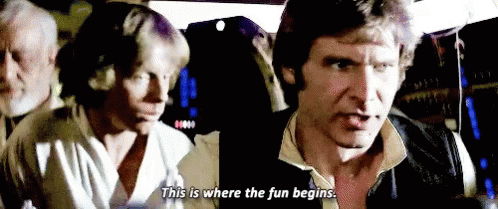
A good storyteller uses something that the audience can relate and empathize with for their main focus. And that’s usually a character (doesn’t have to be. You can describe a tree with personification in a poem, and a human will empathize with that tree’s “life,” or situation, and boom—suddenly you have a story.)

A super talented writer I know named @doverstar once wrote an entire story from the perspective of I think a paperclip? And I still remember it to this day. (Specifically I remember a crazy straw wrapper in the story, but you get my point.)
SO! Characters are the easiest and best way for a storyteller to get the person they’re trying to communicate with to engage. Which means, looking at characters is the easiest avenue to understand a story by. Usually, the storyteller jammed the whole message of the story into their characters in neat, interesting little packages. You just have to unpack them.
Here’s how I do it, roughly:
A. Figure Out What the Character Wants
In my post about The Lion King, I said Simba wants to be free to do whatever he wants all the time. And that’s true. But how did I figure that out? I’ll show you. It’s plain, because the storytellers wanted you to know.
Look At Dialogue - What a character says almost always gives you hints to what they want—even if they never say what they want out loud. Kids are most likely to say it, point-blank. So cub-Simba says, “But I thought a King could do whatever he wants.” But adults usually don’t say exactly what they want, because by that time, they’re either confused about what they want or they’re insecure about what people will think of what they want—whatever. The point is, pay attention to what a character says. Simba also sings, later, “free to do it all my way!” You can also find a lot out by what a character doesn’t say. Aladdin could’ve said, “yeah, well, at least I’m not a pompous jerk!” when Prince Achmed calls him “worthless.” That would’ve been more of his gutsiness, and he would’ve been right, like a hero should be when calling out a bully. But it wouldn’t have told you anything about what he thinks about what Achmed just said. Instead, he goes, “I’m not worthless!” …People who really believe obvious things don’t say those obvious things. Because they’re obvious. So when Aladdin says, to a closed door and an empty street, “I’m NOT worthless,” you realize that he’s just trying to convince himself. What he means is, “I don’t want to be worthless, and I don’t want to be seen that way.” Because on some level, he is afraid that he is worthless. See how you can tease that out based on what Aladdin says? Then it makes sense that, from that moment on, Aladdin does everything to prove he’s not worthless, or to make people believe he’s not—he goes to great lengths to preserve that image. That’s his motive. Just like Simba disobeys his father and Zazu because he wants to prove he’s a powerful Prince who can do whatever he wants. That’s his motive at the beginning of the movie. You can also learn a lot about what a different character says about another character. And whether or not they’re portrayed as right or wrong. When Prince Achmed says Aladdin is “worthless,” you don’t believe him. He’s drawn in gross curvy lines and he whips children and kicks poor people. You’re not inclined to believe he tells the truth, on top of all that. So the storytellers don’t want you to think Aladdin is worthless—they want you to believe that Aladdin thinks he’s worthless, on some level.
Look at Actions - Actions do speak louder than words. When a character is presented with a decision to make, look at what road they take.
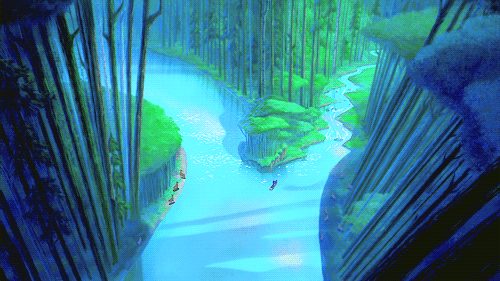
Look at what that says about them. For example, when Andy Dufresne chooses to play music for all the people at Shawshank, even though it’s definitely going to get him in trouble, or when he dares to approach and talk to the abusive prison guard just for a few beers, you learn something about him. It might be confusing, and it might take cross-referencing that action with the fact that he’s digging himself a way out while everyone else is accepting their sentence. But you’ll see that he could have just done what everybody else did. Got through his sentence with the bare-minimum of work. Kept himself busy with any old thing. But that’s not what the storyteller has him do. The storyteller had him continue to bring new, life-lived things into the prison. He creates a space for people to learn and better themselves, he wheedles beers in just for the enjoyment of them, he’s beaten for the sake of music being played. The idea is that he’s going to keep pushing and living, reaching for more, instead of settling, like a man who’s already dead. So then by the time he digs his way out of Shawshank, you believe it. You’re like, “yeah, Andy would do that. I’ve seen him go to great lengths to live this whole time.” Through his actions, and the actions he doesn’t take even when he could, you figure out his motive.
Watch for the Change - Not every character changes. But when a character starts saying something that’s opposite to the kinds of things they said at the beginning, take note. When the character starts doing something they wouldn’t or couldn’t do at the beginning, take note. Miles Morales tries to jump off a building as his first test of being Spider-Man, and he can’t, he goes to a shorter building. Later in the movie, he jumps upside-down off of one. The change in action demonstrates a change in motive—he used to be focused on not-failing. Now he’s focused on taking action.
I’m sorry, I know this is already a long post, but wanna see it all come together?
(Dialogue) On Miles’ first day in class a girl points out that his shoes are untied, and Miles says, “I know. It’s a choice.” He leaves his shoes untied on purpose. (Action.) He also tries to fail in school on purpose. (Action and Dialogue: His teacher spells it out with her dialogue “You’re trying to quit. And I’m not going to let you.”) Then later when Mils tries to run and jump off a short building as Spider-Man, his shoes are still untied. Why? He does things sloppily on purpose. He leaves his shoes untied the same way he tries to fail tests he knows he can pass—because it’s easy. Because you can’t fail at something risky if you don’t try. So he trips and falls off the building. (Action.) That’s Miles’ motive. He’s got “Great Potential,” but he could succeed, but he chooses not to because he’s afraid of failure. Then later, when he leaps headfirst down a skyscraper, did you notice his shoes? They’re tied. (The Change.)
All from a pair of shoes.

Someone had to draw this kid’s shoes, before anyone knew what he would be wearing, and decide why it mattered. Someone had to pick what dismissive line a kid would say to him on his first day of school—and they had to pick exactly what words he would use to respond.
They’re trying to tell you something. All you have to do is believe that, and then you’ll start to not only hear what they’re saying, but appreciate how they choose to say it.
B. Figure out Who a Character Is
This one you can find clues for in the same three things: Dialogue, Actions, The Change. (If there is a change. There isn’t always.)
A character like Stitch is easy to analyze. Other characters straight up say (Dialogue) “You were built to destroy, you have no place among us, you wreck everything you touch, there is nothing inside you that is good.” Then he makes abominable choices (Action) pushes little girls down, rips up toys, chews on the heads of other aliens, actively tries to murder alien cops. But he also looks sad after a night of destroying things (Actions) and asks Lilo to explain to him a book about an ugly duckling (Dialogue? He sort of grunts.) So you’re starting to notice solid character traits: Stitch is evil, Stitch likes being evil, but Stitch feels empty being the way he is. Then when the Change comes, it’s meaningful, and it gives you a hint as to what the storytellers were trying to say.
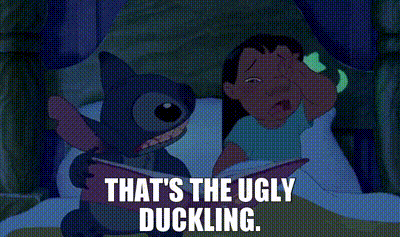
You get a sense of what Stitch would do, what Stitch wouldn’t do—and you can ask why. With Stitch, it’s just because that’s how he was created by his literal creator. But with other characters, like Cinderella, you’re given background. Her parents taught her to be good and kind regardless of her circumstances. So then when her circumstances get worse and worse, and she chooses to hang on to what she was taught even when the parents are gone, that’s a big deal. And what happens as a result of that “big deal,” what happens as a result of “who the character is” and their “motive,” is our next step!
Remember, you can do this for almost all of the characters. And whichever character gets the most screen-time, what they’re doing during that screentime—all of those things matter.
Step 5: Look at What The Storytellers Reward & Punish
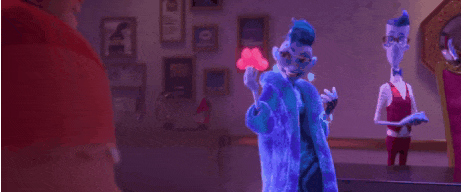
People mess this step up because they mess up Step 2. They forget that the storytellers are trying to tell them something—something specific, something with parameters—and they just start reading their own ideas and reasoning into the characters.
Prime example: people blaming Admiral Holdo for Poe’s actions in Star Wars: The Last Jedi. The whole movie, Poe is doing things that are understandable, but ultimately, foolish. His Character Actions are coming from his Character Motives—which are flawed. Poe believes he should always stand and fight and do what’s heroic. There’s a little pride that goes with that—that he has to be the one to make the stand, or at least to know that there is a heroic plan. But every time he takes these actions, something bad results from it.
Disobeys Leia and Bombs the Dreadnaught -> Every other Pilot dies, and the ship is being tracked anyway. Leia slaps him and tries to tell him to learn a different lesson. Sad or intense music plays. One of the other main characters is majorly negatively affected by the death of her sister in this bombing run.
Sends Finn & Rose on a Mission Without Trusting His Superiors With the Plan -> They Don’t Make It and Nearly Die. His Superiors Trust Him Less.
Staged a Mutiny Necause He Doesn’t Trust Any Plan That’s Not Heroic, Especially if They Didn’t Tell Him First -> The Real Plan is Almost Foiled, Leia Stuns Him.
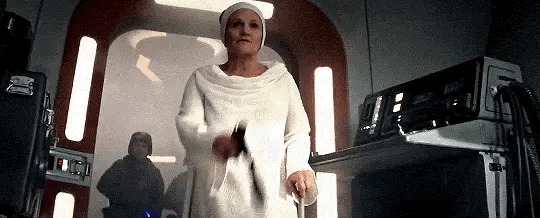
But some people see all that and they don’t willingly accept that the filmmakers are telling you Poe is in the wrong. They impose the fact that they like him, and they don’t like the purple-haired lady, over the narrative—against all reason, against all odds. They’ve stopped taking in the story, and they’re writing fanfiction before it’s even over. They believe Poe is in the right—if Admiral Holdo had just told him the plan, he would’ve gone alone with it! None of this had to happen!
Actually, the storytellers prove the opposite of that: that Poe would’ve been furious and put a stop to a life-saving plan, because he hates running away. But people are spinning out into “what SHOULD have happened,” or removing one tiny piece of the story and blowing it up and out of context, and judging the whole story on that. If you’re not a big Star Wars fan, consider this: I’ve seen people argue that in Beauty & the Beast, the Enchantress is the real villain and the Beast and his castle are the victims. This is ridiculous. Clearly, the storytellers are telling you that the Beast was in the wrong and the Enchantress was in the right.
They’re telling you this because they design the Enchntress beautifully. They align her with virtues like “value love, be kind to others, be humble,” and they introduce the beast to you with “sneered, selfish, spoiled, unkind, no love in his heart.” They straight up tell you that in the narrator’s voice. You have to believe them, in good faith, if you want to understand what they’re saying.
What about when there’s no voiceover narrating what’s good and bad? No problem. Look at other things. Like I said, look at how Poe is made a fool of by a benevolent and beloved character (Leia) whenever he makes decisions that the storytellers want you to see as bad decisions. Look at the lighting, the location, the colors, and the music during scenes where consequences of a characters’ actions are coming.
That’s what you’re looking for. What does the movie say is good, and what does the movie say is bad? What does the movie say is true, and what does the movie say is a lie?
At the beginning of E.T., the main character is disliked by everybody, including his older brother, because he only thinks of himself and how he feels. By the end, when the kid has taken such careful care of E.T. and reveals it to his big brother, his big brother wants to help him. They’re all brought together. Because the main character stopped doing something that the storytellers disapprove of, which is “thinking only about how you feel,” and he started “thinking about how other people feel” for a change. In the beginning of the movie, he’s lonely, angry, standing in shots that are wide and empty. By the end, he’s flying, beautiful music is playing, and he’s happy. The storytellers reward what they’re trying to convince you is good and right.
Step 6: Are the Storytellers Right?
I always stress remembering this last part. It’s all well and good to lower your defenses and take in a story in good faith. You should not ask this question until you’re done listening, in most cases. Just like it’s well and good to listen to someone with a different perspective than you—you might be wrong, and a story’s main function, like I say on my profile’s pinned post, is to act as a Signpost that Directs You Back to Truth When You’ve Wandered.
But the problem is, fallible humans are telling the stories, and fallible humans are listening to the stories.
So you need to know what you believe, and after the storytellers tell you something, measure it against reality. When Greta Gerwig says, “You Can Be Whatever You Want to Be, Because You’re God,” and she says it with the Barbie movie, is she right? When Cinderella says, “Have Courage and Be Kind, and You’ll Have Hope in the Worst Circumstances,” is the movie right? What if you find yourself in the worst of circumstances one day—you better hope Cinderella didn’t feed you lies. What if there is a God, and it’s not you—you better hope Barbie didn’t feed you lies. I really enjoyed going over this! I’m sorry it was so long. If there’s ever anything more or like, follow-up questions, go ahead and ask! I’ll try to make it briefer next time. Thanks again!
#storytelling#story#stories#movies#tips#into the spider verse#inside out#the lion king#Aladdin#Disney#character writing#character analysis#analysis#media analysis#film#Shawshank redemption#writing#writing advice#tricks#media criticism#critical thinking#Barbie#Barbie 2023#asked#answered#meta#community#abed nadir#Jeff winger
92 notes
·
View notes
Text
So you want to write about horses.
Specifically, you want to write about horses in your medieval-inspired fantasy novel, rpg, or daydream fantasy. Knights in shinning armor on noble steeds, damsels in distress(or not!) on fine prancing mount, or an evil sorcerer cackling on a fierce charger above your poor tandem MCs.
Whatever it is you're imagining, a medieval horse appears. But you know nothing about horses. I can help.
(If you would like to begin with my first basic Basics post, start here)
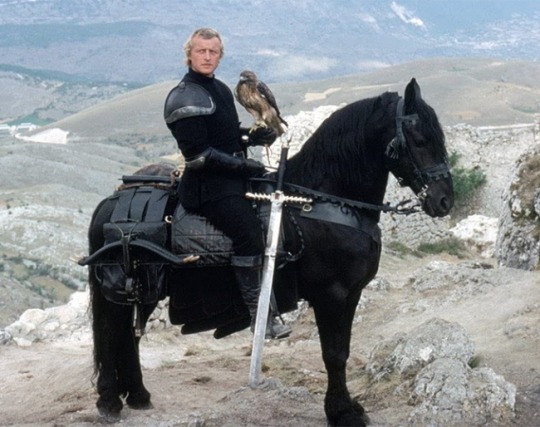
^ When thinking knight, you're probably imagining a horse like this.
Preface: When talking about fiction, there is always a question of historical accuracy. That is wholly up to you. But you will at least, after reading this, know more of the historical fact involving horses, and certainly know about some of the more commonly-complained about fallacies involving horses in media.
Now, the above still is from the film Ladyhawke (1985), which is often credited for popularizing the Friesian breed in the United States. I can almost guarantee you have see a Friesian in a film or on TV. The recent series Shadow and Bone had a central character ride a Friesian in one episode. They epitomize the romantic nobility and grace of knights. Except they don't.
The horse you see above came into existence in 1879, primarily as a harness and agricultural use horse. Horses known as Friesian horses have existed since the 11th century, but those horses were completely different from the breed created in the 19th century. The modern Friesian is a trotting breed, made to pull carriages and look beautiful doing it. They have a long back, short neck, and due to inbreeding, a host of nasty genetic problems including dwarfism, aortic rupture, hydrocephalus, and megaesophagus.
However, breeds that trace ancestry back to beyond the middle ages do exist, and they have been breed to look much the same for generations. Introducing:
The Barb/Berber Horse
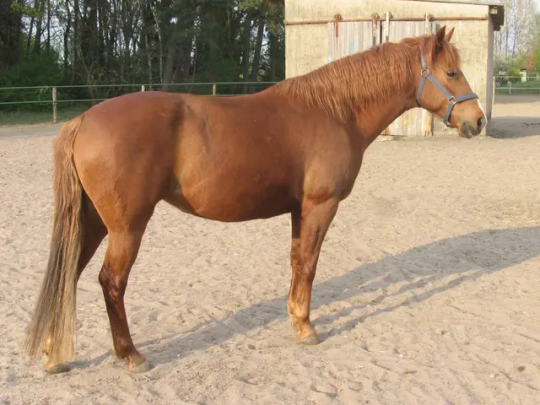
^Kinda just looks like A Horse™
The Barb comes from North Africa, and was spread into Europe through the Muslim conquest of Spain, where the breed mixed with the native Andalusian breed to create the Spanish Jennet, which is possibly the most widely successful horse breed in all of history. The Jennet is currently extinct*, but due to its durability, it was the horse used by the Spanish AND the British to invade the Americas, and descendants of the Jennet survive in local breeds from Argentina to Canada.
*a revitalization breed does exist of the same name
The Andalusian/Lusitano/Pure Raza Espanol

^The true Fabio of horses, known for thick flowing locks and sweet dispositions
Possibly the horse that most strongly resembles the ancient knighly horse, this noble creature used to be the preferred horse of film, before the Friesian rise in popularity. Horses of Spanish bloodlines are Andalusian, horses of Portuguese bloodlines are Lusitano, but the characteristics of both breeds are nearly identical. They are also known for a fancy 'high stepping' movement, in which they raise their knees higher than other breeds naturally.
The Arabian
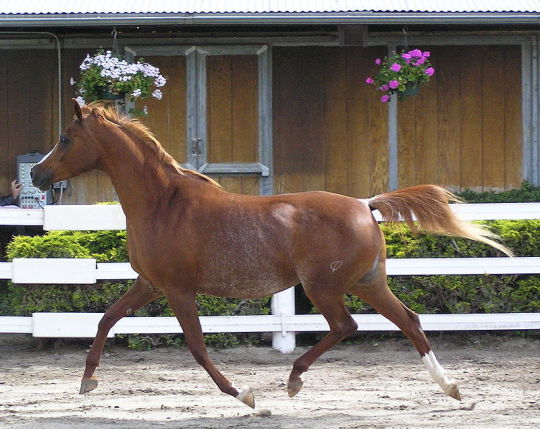
^Note the narrow, 'dished' face and raised tail, breed characteristics
The ancient horse of the desert, made famous through books such as The Black Stallion, King of the Wind, and films such as Hildago. These horses are known for their stamina and intelligence, and were traditionally used as war horses by the desert tribes of the Arabian Peninsula. The Arabian has descendants in almost all modern breeds, as it is used to add strength and stamina to the original stock, despite being a relatively small horse. During the Napoleonic wars, this horse became the prized war horse of Europe as well, with Napoleon himself preferring to ride Arabians into battle.
The Mongolian Horse
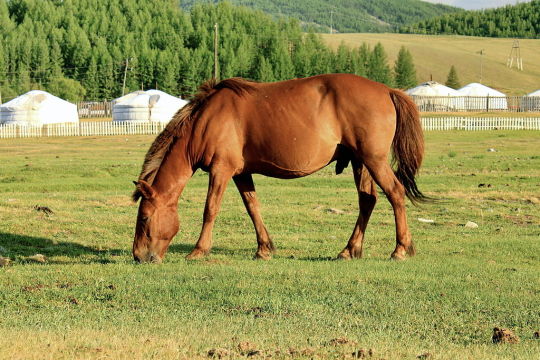
^Thick head, thick body, this horse is made to survive winter on the steppes
Introduced to Europe from the Hunnic invasions that ended the rule of Rome, the Mongolian horse is made to survive, thrive, and run in harsh cold weather. This horse allowed Ghengis Khan and his soldiers to conqure one of the largest empires to ever exist, from Korea to Poland. This compact horse would have mixed with the native stock of Russian, Eastern European, and Germanic tribes to help create the ancient northern horses, resulting in a thicker breed of horse in the north, and a lighter breed of horse in the south of Europe. Modern-day pony breeds such as the Exmoor, Fjord, Icelandic, and other have been found to have genetic ties to the Mongolian horse.
These horses do not exactly look like the modern image of knights on massive horses, but it is useful to remember that 1. people back then were a lot smaller and 2. horses back then were a lot smaller. Of course, there were hundreds of other local breeds during the middle ages, but many have been modernized and become today's sport, work, or pleasure horses.
During the middle ages, horses were not actually defined by breed. They were defined by the work the horse was suited and trained to preform. There were five main types of medieval horses.
The Destrier
Also called The Great Horse for its size, strength, and price, this horse was the renown mount of knights and kings in battle. These horses were highly trained for battle, and could be taught to do such things as striking out at soldiers in front, kicking at soldiers from the back, and even leaping all four feet in the air to protect it's rider. They would wear the most armor, and these horses would likely be closest in appearance to the modern Andalusian.

^Ornate heavy armor on a model horse. This armor was made for a horse not much more than 15hh, what today would be a small horse.
The Courser/The Charger
A lighter horse than the destrier, the courser is also a warhorse, highly trained and well-bred, but a little less expensive. A knight might not be able to afford a destrier, especially as a minor knight, but every knight should have a courser. The Spanish Jennet is the epitome of the medieval courser, and in fact was the horse used by Richard II. According to Shakespeare, the horse's name was White Surrey, although other sources claim the horse was Roan Barbary, and was a Barb or Berber horse*.
*Bought from Spain and likely a cross of Spanish and African blood, so a Jennet. But Jennet was also a classification of a horse type in those days, so, sources are muddled.
The Rouncey
The 'average' horse of the time, this horse was used mainly for riding, but could sometimes be ridden into battle if trained properly, and were the preferred horse for lower-class fighters such as archers or men-at-arms. As it described a riding horse, these horses came in all shapes and sizes, from all lineages, and in all colors. In peacetime they could be used to draw carriages or work fields. A proud and expensive destrier would never be caught pulling a plow.
The Palfrey
A highly-bred, highly trained horse, this horse is a high quality riding horse known for a specific gait, called an ambling gait. This horse had a special pattern of moving its feet that gave the rider a considerably more comfortable ride than the traditional 4 gaited horse. After the middle ages, these horses almost disappeared, only to be recovered in the Americas in the form of 'gaited' horses such as the Paso Fino, the Rocky Mountain Horse, the Missouri Foxtrotter, and the Tennessee Walking Horse. The Icelandic horse has also retained the special Tölt gait that may* be the exact gait of medieval ambling horses.
*may, I am not a gaited horse expert.
The Packhorse
This describes any kind of horse, usually a rouncey, that is used not for riding but to carry supplies. Packhorses could also be mules, donkeys, and ponies, so long as they could carry weight for long miles. These were supply horses, carrying food, weapons, tents, whatever else may be needed.
Knights, Horses, and the Battlefield
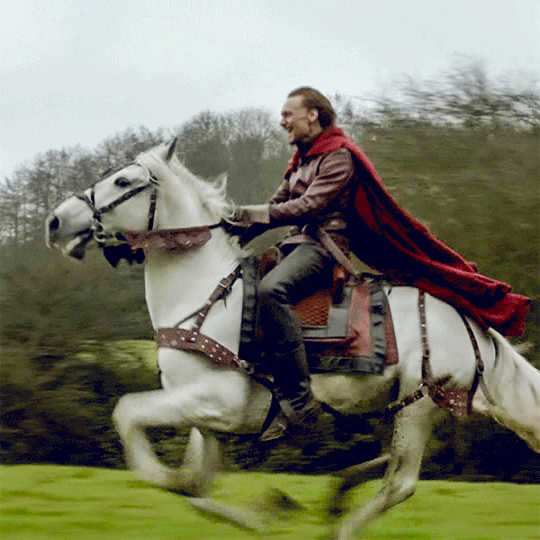
^ What an incredible creature of power and nobility. The man is fine too, I guess.
Now, if you have seen the above scene, you have probably seen The Hollow Crown, a historical drama with a few late Medieval battle scenes. In these scenes, knight clashes against knight in a furious charge, leading to pitched battles on horseback. I'm not going to say that never happened, but by and large cavalry was directed against infantry, not other cavalry, or used to conduct maneuvers requiring speed and surprise, such as a charge, a circling maneuver, a bluff retreat and most importantly, to chase down routing enemy soldiers. A knight on horseback was most effective in close quarters against unmounted and surprised soldiers. Lances were the primary weapon, allowing a mounted warrior length to spear and batter down at enemies, and a sword was secondary, as it had a shorter length, and would be used if a mounted warrior was surrounded by infantry or in battle against another knight. Throughout the medieval period, horses sometimes were removed from the fight all together due to unfavorable land, and kept in reserve to either help the army flee or to chase down the fleeing enemy.
Hungry for more?
There are many sources out there to learn more about the medieval period and knights in particular. I would highly recommend that you not look at Medieval Times sources, if only because better sources are out there. I enjoy the videos produce by Jason Kingsley CBE (Yes, that Jason Kingsley CBE) on his Modern History TV YouTube Channel, and find them to be accurate as far as I'm aware.

^ Jason Kingsley and his horse Warlord, in costume. I've sent marriage proposals but I've not yet received a reply.
That's all for this post. I'll have more when I feel like it, and send me questions if you want to know more about specific things or need a writing question answered
Reblogs welcome and encouraged
@jacqueswriteblrlibrary for wider reach
#writing#writeblr#writing horses#how to write horses#writer advice#writing help#writeblr community#writers on tumblr#writers#writerscommunity#creative writing#horses#how to write#advice post#medieval knights#writing medieval horses#horses in film and media#writing fiction#writer stuff#writing fantasy#writing historical fiction
203 notes
·
View notes
Text

~ one of my favorite movie quotes. everyone has their own set of goals and aspirations, and whether or not they align with your visions- never dissuade or discourage someone from achieving what they dream of.
#student blog#life#aesthetic#little women#quotes#quoteoftheday#life quote#beautiful quote#literature#book quote#movie quotes#little women 2019#meg march#lovely quotes#louisa may alcott#life advice#life quotes#movies#films#cinema#little women quotes#inspiring quotes#quote#advice#life tips#advice blog#life blog#rambles#quote of the day#quote blog
47 notes
·
View notes
Text




Love seeing her name on screen
#taylor russell#tayrussell#women in film#trussell#bones and all#mother couch#Dr. Bird's Advice for Sad Poets#hot air
82 notes
·
View notes
Text
I think my biggest pet peeve in media, especially in movies where this is by FAAAAR the most prevalent, is when an actual cool/emotional moment is undercut by an unnecessary ass joke.
This is the most frequent in kids and superhero movies, and it pisses me off SO much in both. Kids aren’t stupid, they can let a moment resonate. For example, I can’t think of an example from either Inside Out movie of this happening. Compare this to the recently released Moana 2 ( which I did enjoy, for the record ) where there were multiple moments I groaned because a stupid joke was made that actively took away from a scene.
TDLR; Let your moments sit and resonate, the audience isint stupid, and shoving a joke into a serious moment only devalues everything you’re trying to achieve
#this is also why I hate the stupid ass kiss gets interrupted as a joke trope#it has the same issues#writing#writers on tumblr#writing on tumblr#writeblr#writerscommunity#writing community#writing advice#writing criticism#tropes#film critique#Moana#Moana 2#inside out 2#inside out
31 notes
·
View notes